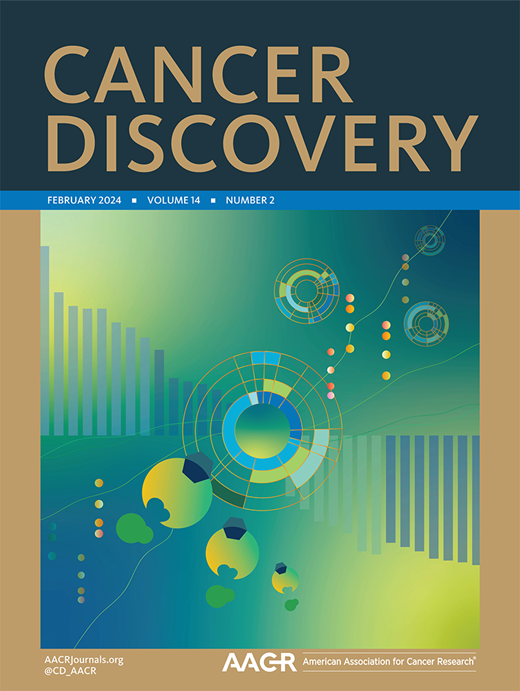HIF-2-dependent Regulation of PTHrP and Paraneoplastic Hypercalcemia in Aggressive Clear Cell Renal Cell Carcinoma.
IF 33.3
1区 医学
Q1 ONCOLOGY
引用次数: 0
Abstract
Renal cell carcinoma (RCC) patients with hypercalcemia (HC) have worse outcomes. HC often involves PTHrP, and the role of HIF-2 is incompletely understood. Leveraging RCC tumorgraft (TG) models of HC, which were characterized by tumor cell autonomous inflamatory/immune signatures, we show that HIF-2 inhibition with PT2399 frequently normalized calcium, downregulated circulating PTHrP and reduced HIF-2 binding to the PTHLH (PTHrP) promoter. Likely contributing to the selective induction of PTHrP in a subset of HIF-2-dependent tumors, the PTHLH locus was generally more accessible in TG(HC). However, PTHLH chromatin accessibility was grossly unaffected by PT2399, unlike elsewhere (including EPO locus in a TG with paraneoplastic polycythemia). As in TGs, paraneoplastic HC in patients was associated with clear cell (cc)RCC (and sarcomatoid/rhabdoid differentiation) and was rapidly corrected by PT2977/belzutifan, which unlike bisphosphonates, downregulated PTHrP. Our data supports evaluating HIF-2 antagonists for ccRCC patients with paraneoplastic HC, which may serve as a predictive biomarker.侵袭性透明细胞肾细胞癌中PTHrP和副肿瘤性高钙血症的hif -2依赖性调节。
肾细胞癌(RCC)合并高钙血症(HC)患者预后较差。HC常涉及PTHrP, HIF-2的作用尚不完全清楚。利用以肿瘤细胞自主炎症/免疫特征为特征的HC的RCC肿瘤移植(TG)模型,我们发现PT2399抑制HIF-2经常使钙正常化,下调循环PTHrP并减少HIF-2与PTHLH (PTHrP)启动子的结合。可能在hif -2依赖性肿瘤的一个亚群中选择性诱导PTHrP, PTHLH位点通常在TG(HC)中更容易获得。然而,PTHLH染色质可及性不受PT2399的影响,不像其他地方(包括副肿瘤性红细胞增多症的TG中的EPO位点)。与TGs一样,患者的副肿瘤HC与透明细胞(cc)RCC(和肉瘤样/横纹肌样分化)相关,并通过PT2977/belzutifan迅速纠正,与双磷酸盐不同,PT2977/belzutifan下调PTHrP。我们的数据支持评估HIF-2拮抗剂对ccRCC伴副肿瘤HC患者的疗效,HIF-2拮抗剂可能作为一种预测性生物标志物。
本文章由计算机程序翻译,如有差异,请以英文原文为准。
求助全文
约1分钟内获得全文
求助全文
来源期刊

Cancer discovery
ONCOLOGY-
CiteScore
22.90
自引率
1.40%
发文量
838
审稿时长
6-12 weeks
期刊介绍:
Cancer Discovery publishes high-impact, peer-reviewed articles detailing significant advances in both research and clinical trials. Serving as a premier cancer information resource, the journal also features Review Articles, Perspectives, Commentaries, News stories, and Research Watch summaries to keep readers abreast of the latest findings in the field. Covering a wide range of topics, from laboratory research to clinical trials and epidemiologic studies, Cancer Discovery spans the entire spectrum of cancer research and medicine.
 求助内容:
求助内容: 应助结果提醒方式:
应助结果提醒方式:


